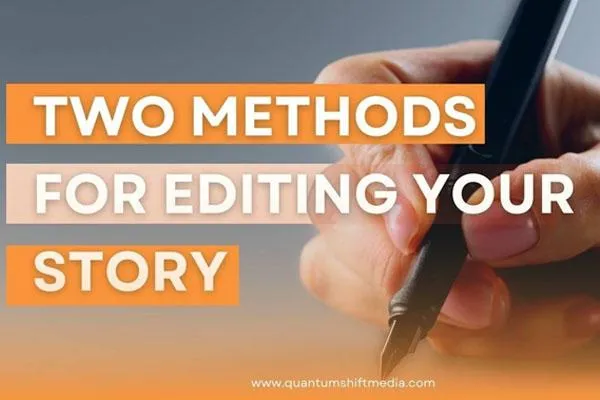
Two Methods for Organizing Your Story
In our last few blogs, we’ve been discussing different approaches to writing fiction. In our first blog, we talked about the Storybrand approach with the character having a problem, encountering a guide who gives them a plan and calls them to action. That action either helps them succeed or avoid failure.
In our second blog, we talked about gathering assets and brainstorming your storyline.
In the third blog, we talked about writing your story using the famous 3-act model.
In this blog, we are going to focus on the next step: editing your story. There are 2 levels for organizing your story and they run parallel with each other:
Order of Events- organize your events in sequential order.
Conflicts Evolution- manage when to introduce a conflict and when to solve it.
Running parallel to the order of events and how you want to tell the story. Also, consider the Conflicts Evolution - meaning the development of external or internal movements.
While the chronological order of events in a story is not always the best way to deliver the information to the reader, the parallel order of events can help create more clarity and an intriguing narrative that hooks the reader into wanting to know more, while the reading journey is enhanced and consistent.
Based on the three-act structure we talked about, here is how these events should be laid out and what each event and conflict evolution should look like:
Prologue:
Telling something that happened before the beginning of the story to explain and introduce an event, a character, or relevant information that is important for the reader to know.
Set-Up - Act 1:
You start with the introduction. This is the beginning of the story where you introduce the characters and give the preliminary information. All the main elements of your story including time, world, and actions.
Catalyst:
What is the inciting incident or sudden event that makes the plot move forward? It can be the climax of the first act, and a Call to Action for one of your characters.
Rising Action:
At the beginning of Act 2 where you introduce the changes, enemies, and new characters. The hero has his training, meets his allies, and gets to know the enemies he will have to face. This can be the heart of your story.
Mid-Point:
The calm before the storm. Give the reader a little break as your character is preparing to face the crisis to come.
Crisis:
The reader should think that all is lost. This is the saddest part of your story.
Climax:
The final conflict and most exciting moment of Act 2. It is usually the final battle.
Resolution:
Beginning of Act 3. All the conflicts are solved. The focus is on what happens after the crisis. Is there another event before the final balance is reached?
Epilogue:
Tell the reader something after the end of the story. Perhaps explain something that happened after a long period of time passed.
I recommend putting the main points of your story on colored post-it notes and putting them on your wall so you can visually see how your story is progressing and where you need to change some of the structure.
If you’re wanting to write a book, we’d love to talk and learn more about your story and why you’re writing it. We’ve been publishing books for a long time and at the very least, we can help point you in the right direction.
Schedule a call with Keren today and explore what being a published author can do for you.

